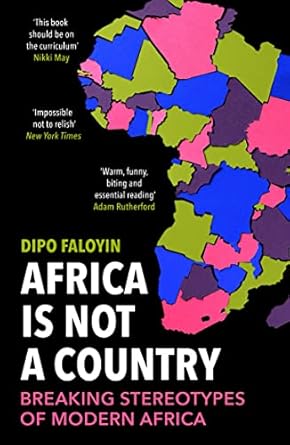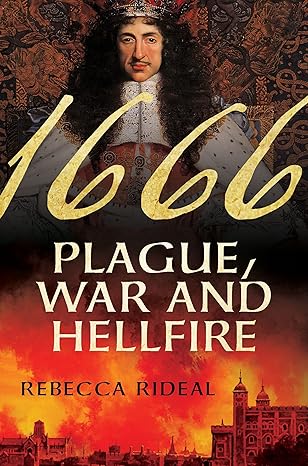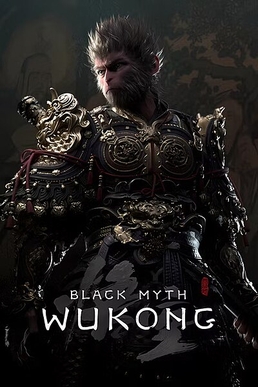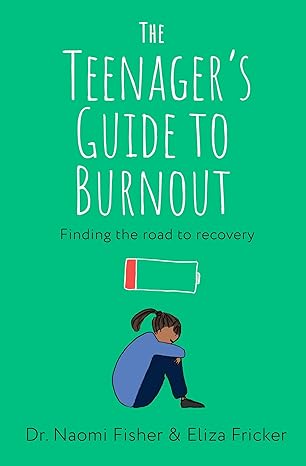Author's posts
Mar 19 2025
Book review: Africa is not a country by Dipo Faloyin
My next review is of Africa is not a Country: Breaking stereotypes of modern Africa by Dipo Faloyin. It follows a thread of books I have read on Africa and Black people in the UK and elsewhere, this was prompted by the Black Lives Matter movement in 2020.
Africa is not a country is about viewing Africa from an African perspective. It is comprised of 8 parts, the first of which is a thumbnail sketch of the author, and his family, and where he grew up in Lagos. Faloyin is Nigerian with part Yoruba and part Igbo background although he was born in Chicago and now lives in London. He paints a vivid picture of his upbringing very unlike my own, mainly because his family is clearly very sociable and loves cities (or at least Lagos).
The second part goes on to talk about how the 54 countries of Africa came into being, starting with the Berlin Conference in 1884, in which the Western powers agreed to divide up Africa; no Africans participated, despite requests. One thing that struck me was that outside the conference politicians as senior as Gladstone in the UK knew that what they were doing was wrong. The US refused to sign the General Act of the conference, despite being participants. It isn’t clear whether this was a decision made on moral grounds. The 54 countries is something I think I will return to as a number, for comparison Europe has 44 countries, half the number of people and a third of the land area so we might expect Africa to be rather more diverse than Europe.
As a British European I don’t like to dwell too long on the colonial period. This part of the book highlights the preference of the British to out-source the colonisation problem to private companies, in particular the Royal Niger Company, which was taken over by Unilever (a former employer of mine) in the 1920s and only ended its existence in 1987. King Leopold II of Belgium’s subjugation of the Congo (essentially for his own personal gain) is spine-chilling – over the 20 years after the Berlin conference half the population, 10 million people were killed.
The division of Africa into arbitrary countries that did not follow ethnic or any other native pattern had consequences in the post-colonial period; the countries created at independence were naturally unstable so conflict was inevitable. However, the African consensus is that it is best to stick with these countries rather than attempt a wholesale reorganisation. This is not a peculiarly African problem, we can think about the fighting as Yugoslavia fell apart, and the Soviet Union, and the secessionist movements in Spain or Irish reunification.
Many of my early memories of Africa represented in the UK were of Band Aid, and the Ethiopian famine (1983-5). Faloyin sees this as the birth of modern white saviour imagery (I don’t disagree with him). Band Aid projected an image for all of Africa of famine and misery whose inhabitants could only be saved by the intervention of white Westerners – this theme has been repeated endlessly since then. It feels like things are changing though, for the 30th anniversary of Band Aid in 2014 there was a pretty large backlash with musicians with African backgrounds refusing take part. Of the leaders of the Aid/Relief movement Bob Geldof, for his part, essentially said the means justified the ends whilst Lenny Henry was more reflective on the appropriateness of the “white saviour” narrative.
The theme of representation gets a reprise in a later part of the book where Faloyin talks about representations of Africa in the movies which are usually highly stereotypical. This chapter is genuinely laugh out loud funny, as the author says it is a pastiche of Binyavanga Wainaina’s “How to write about Africa“. I hadn’t appreciated quite how revolutionary the film, Black Panther, was in terms of it’s representation of Africans. Actors in Black Panther did not act as generic Africans, they took on national or region speech and habits. Somewhat to my surprise Faloyin cites Coming to America as an earlier film in the same vein – sadly from Hollywood this appears to represent the full list of African films.
Faloyin talks about the story of post-independence democracy in seven types of dictatorship: cold war dealmakers, god-playing colonial masters, revolutionary heroes, opportunistic families, civil-war peacemakers, founding fathers and (rarely) unhinged madman with taste for human flesh. He does this through brief sketches of 7 post-independence leaders Siad Barre, Sani Abacha, Robert Mugabe, Paul Kagame, Abdelaziz Bouteflika, Obiang Nguena Mbasogo, and Muammar Gaddafi. Some of these dictators have fallen, but others and others like them remain in place. All of them have been supported to some degree by the West or the Soviet Union – sometimes both!
The chapter on looting is perhaps the most shameful for a British European since it is ongoing; the “Scramble for African” in the 19th century is beyond our reach – it happened in at least our great-great grandparents time. But in terms of looted artefacts it is my generation, people like me, in museums in my country who hold a tight grip on the artefacts taken (violently) by British forces during the Scramble with little obvious will to return them. Much of this discussion is based on the Benin Bronzes, these were not just taken, the sophisticated cities that held them were destroyed. Faloyin states that 90% of Africa’s cultural artefacts are now outside of Africa but of the 900 or so Benin Bronzes held by the British Museum, 800 or so are in storage. When Benin Bronzes went on (loaned) display in Cotonou, capital of Benin 275,000 people went to see them.
France, Germany, and Belgium were also heavily involved in looting artefacts – the Germans seem to have a particular enthusiasm for human remains which fed into their race science research.
It is fair to say there has been some progress on the return of artefacts to Africa but mainly in writing reports, with minor organisations returning a few artefacts with great fanfare, and foot dragging. Faloyin estimates that the number of artefacts under discussion for return is around 10% of the total.
Jollof, a rice dish from West Africa is a bit of a recurring theme through the book, clearly of critical importance to West Africans, and the author, but perhaps included for relief from some of the more serious chapters.
The book finishes with some vignettes with modern Africa, through protests in several countries, culture and the story of Botswana who fortunately discovered their diamond deposits after independence from the British and has thrived as a country since. Faloyin is optimistic about the future, he sees a young continent with a lot of positive things going on and perhaps signs of the end of the post-independence conflicts.
Feb 26 2025
Book review: 1666 – Plague, War and Hellfire by Rebecca Rideal
My next review is of 1666 : Plague, War and Hellfire by Rebecca Rideal. The book is centred on London, in the year 1666 with a substantial chunk on 1665 which provides background to the events of the following year. It was certainly a very eventful time, the plague of the title is the Black Death which made a return to London in the summer of 1665. The war is the second Anglo-Dutch War and the hellfire is the Great Fire of London.
It is only a few years after the Restoration. As an interesting aside I learnt of the Indemnity and Oblivion Act 1660 which appears to have forgiven all crimes committed during the Civil War, except for regicide. This is relevant since some senior figures in the navy had been involved in Cromwell’s government. John Milton benefited from it too, as someone imprisoned for his anti-Royalist views.
1666 is substantially about the “great men”, such as the king, his brother and the court but it contains quite a lot of rather smaller characters. I was intrigued by the reports from William Taswell, a schoolboy, whose autobiography was published posthumously in 1852.
Also mentioned, amongst many others are Margaret Cavendish, whose biography I read previously, and Aphra Behn – who sounds like a really interesting woman. In this book Behn travels to the Netherlands as a spy, she would later go on to become a prolific playwright. Rather inevitably Samuel Pepys appears frequently, as does another diarist, John Evelyn. Robert Hooke, John Milton and Isaac Newton also gain a couple of pages but it feels a little like they were bolted on for additional colour.
I must admit I read the section on the plague assuming that it was written after the COVID pandemic, and only realised after I’d finished that it was written in 2016. This highlights some of the similarities in pandemics across the years. In contrast to the present day, the 1666 plague led to a mass exodus from London. Those suffering plague were quarantined in their own homes, typically with their families, with fatal consequences for most concerned. At the time there was some discussion as to the wisdom of this type of quarantine. The government took steps to limit public gatherings which seem to have been largely obeyed. The plague was petering out in London by early 1666 but was starting to rage outside the capital. It killed around 100,000 from a population of 460,000 in London.
I have read books on plague, and as a child the Great Fire of London was a regular feature in history lessons. The Anglo-Dutch Wars are something I have not read about before. This thread of the story starts with the accidental destruction of the London in the Thames. Followed by a number of naval engagements where it seemed, to a large degree, that the weather was a determining factor – the navies of the English and Dutch were fairly evenly matched at this point. The English were possibly gaining the upper hand during later Summer 1666 but the Great Fire strained resources considerably. The Dutch successfully attacked the Chatham Docks in the summer of 1667, shortly after a peace was agreed which only lasted until 1672.
The “Pudding” of Pudding Lane, where the Great Fire started, is black pudding, not dessert. Providing a segue from the Angle-Dutch War: Thomas Farriner, the owner of the bakery where the fire started had a contract with the navy to make ship’s biscuit. Farriner was a jury member in the trial of Frenchman Robert Hubert who confessed to starting the Fire, he was found guilty and executed despite being clearly innocent (even at the time). This was an aspect of the Fire I had not appreciated as a child – there was a lot of suspicion, and even violence, against foreigners even as the fire raged on the assumption that the fire could not have spread so fast without help. The total damage was 70,000 made homeless, 13,000 houses destroyed, 87 churches, and 52 livery halls with a total financial loss estimated at £10,000,000 (about £2billion in current figures). Over the four year Blitz campaign during the Second World War around 70,000 buildings were destroyed but the population of London was nearly 9 million rather than several hundred thousand. The fire ran its course in 4 days and obliterated most of the city of London within the Walls.
The official death toll was 6 people, however Rideal highlights this was probably a large under-estimate; many of the elderly and infirm would not have been able to evacuate quickly enough and their bodies would have been completely consumed by the fire. Rideal also talks about the psychological impact of the fire, Pepys writes of his nightmares after the Fire and there are a number of accounts of people clearly permanently changed by the Fire. I can’t help thinking the Plague would have had a similar impact.
The book finishes with an epilogue containing paragraphs on key characters and what they did next.
I found this a very enjoyable read, it is relatively short with quite a narrow scope but it gives a gripping picture of London at the time. The themes of plague, fire and war “work well together”.
Feb 07 2025
Book review: Roads in Roman Britain by Hugh Davies
My next review is of Roads in Roman Britain by Hugh Davies. Davies was a road engineer, and the study of Roman roads is a retirement project for him, which amused me since I am currently contemplating retirement. I don’t mean this pejoratively – I think in Roads he did a great job bringing together his expertise and the existing academic work in the area, as well as his own original research. He gained a PhD in 2001 from Reading University. In addition he has compiled a database of Roman road characteristics which is exactly my sort of thing.
The book starts with some basic definitions of what a road is and how it is structured. Davies focusses on the function of the road as a transport mechanism rather than as a boundary indicator, a navigation system or an expression of Roman power – uses I hadn’t really considered. As a structure a road has a route and a cross-section. I liked the quote from John London McAdam which basically said the function of the road cross-section was to stop the running surface becoming unusable as a result of water coming from above or below!
There is very limited primary documentary evidence for the Roman roads of Britain, there is the Antonine Iternary, tables of routes across the Roman empire which includes some routes in Britain and the Peutiger Tables, a sort of pseudo-map of roads across the Roman Empire of which Britain is only covered in a small fragment showing the far south east of the country.
This leaves us with archaeology, fortunately Roman roads in Britain have been excavated for many years. Less fortunately dating evidence is sparse in roads. Some roads identified as Roman may well date to medieval or even the 17th century when the turnpike roads were the first to match the quality of construction of Roman roads. It’s worth noting that none of the names used for Roman roads (Watling Street, Ermine Street, the Foss Way etc) are original – they are labels dating to the medieval period at earliest. It is not clear if Romans used any sort of naming for roads.
Archaeological practices have improved over the years, it is only really in the last quarter of the 20th century that it was appreciated that Roman roads are structures that were repaired and reconstructed over centuries.
I think the most interesting idea in this book Davis’s proposal for a reason for the straightness of Roman roads. He argues, unlike others, that the Roman’s must have made some sort of map before laying out roads and that the likelihood was that this was some large scale object possibly inscribed onto a floor. Under these circumstances straight road segments are the easiest to transmit to “the field”. It is easy to say “go to this point, build a straight road in this direction until you have gone this distance”, imagine trying to describe a more complex route accurately.
One of the recurring themes of the book is as to whether the Romans built roads to a strict pattern in terms of construction details and width. Justinian codified road classifications in the 6th century AD; an iter is pedestrian only, actus will allow a beast of burden, via will allow a cart however no numerical widths were defined. The Twelve Tables from fifth century BC says a straight section of road must be 8 pedes (Roman feet) wide on the straight an 16 on corners. However, on the ground road widths follow quite a broad distribution with a peak around 20 pedes (which is about six metres). This is wide enough for two-way cart traffic.
Based on the road surface (crushed stone/gravel) and the maximum gradients Davies suggests that Roman roads were designed for heavy carts moving at walking pace rather than fast passenger carriages. I was interested to learn the optimum gradients for carts are based on the rolling resistance of the surface balancing gravity (which becomes larger for steeper slopes). This is to avoid runaway carts since braking technology at the time was poor.
In the past historians have tended to the view that the Romans worked in a very regimented fashion. Davies comes down on the side of a more flexible approach determined by local factors. This is complicated in the archaeological record by repair and reconstruction activities, in some places there is evidence for 9 or 10 cycles of repair/reconstruction – sometimes this is as an addition on top of an older road but sometimes it is a widening of the route.
Davies observes that there is a difference in construction methods between the north and west of the country and the south and east with the north and west making greater use of stone. He attributes this to much more significant military use in the north and west, and better availability of suitable stone.
There is a chapter on Roman town plans which looked like it could be a whole separate book. Roman towns are typically built on a grid sometimes this grid is based around a Roman road alignment – suggesting road predates town and sometimes the road deviates to adapt to the town grid, suggesting town predates road.
Davies covers fairly briefly the development of the network over time, in terms of the military function of roads. The Royal Engineers estimated that the initial road from a Kent invasion landing point to London would have taken 1000 men about 15 weeks, a full version would take 3400 men about 3 years. The Roman road system was not fully developed until into the 2nd century AD – some 60 or so years after the invasion. London was not the transport centre of Britain at the beginning of the Roman occupation but became so over time.
This book is somewhat specialist, I enjoyed it because I’m interested in civil engineering and Roman history. It is short and readable, and I think provides a unique perspective.
Jan 29 2025
Game Review: Black Myth Wukong
In a break from usual service I am reviewing a “computer game”, Black Myth Wukong by Game Science Interactive Technology. I started gaming in the early eighties when I was an early teenager, I think there was a bit of a break when I went to university then I continued into my early thirties (around 2000). There was then a pause until a while after my son was born, we got a PlayStation 5 in Christmas 2021 “for him”.
Since then my favourite games have been Horizon Zero Dawn, Horizon Forbidden West, Elden Ring, Lies of P and Ghost of Tsushima. I bought Black Myth Wukong with my Christmas money – a child once again! In common with my other favourite games it falls into the category of “action role-playing” game.
Black Myth Wukong is based on Journey to the West, a 16th century Chinese novel which I know from an eighties TV series which I remember by its short name “Monkey”. In the game you play the part of “the Destined One” (a monkey) whose task is to retrieve the six relics of Sun Wukong.
The action takes place over 6 chapters, it is closest in style to Lies of P, that’s to say the chapters involve a roughly linear path with battles with minor characters who respawn and bosses who you must defeat to progress. Defeating a character brings rewards, “will” which is the unit of progress used to upgrade your character and buy upgrades and consumables and also items. Fighting is action rather than turn based. Your weapons are a trusty staff (which can be replaced and upgraded through the games), and various spells which fall into several categories: active spells, defensive spells, transformations, spirits, vessels. There’s a huge range of spells and so forth to choose from. My favourite is “Pluck of Many” which summons a posse of replica monkeys to fight for you (but only for a brief period).
Black Myth uses the traditional trifecta of health, stamina and some consumable spell substance (Mana in this case) to indicate your current status. A couple of vessels and spirits are tied to a second mystical substance, Qi and spells have a cooldown period so you have to wait to use them again. Health is recovered by drinking from your gourd which contain a variety of upgradable drinks and “soaks” which have various effects. I think it’s best to think of the “soaks” as teabags! You can also collect a variety of modifying relics which can be equipped to boost various characteristics.
I liked the upgrade and progress mechanics, there are extensive skill trees but you can re-allocate “sparks” freely at the save points (shrines). Dying does not lose your accumulated will, which is an irritating feature of Elden Ring and similar. I have died futilely so many times in Elden Ring attempting to retrieve my accumulated experience points.
The graphics in Black Myth are stunning, a step above even Elden Ring and Lies of P which are excellent. This will be down, in part, to Unreal Engine 5. The chapters also have quite different visual styles – the first chapter, set on Black Wind Mountain is lush forest, the second Yellow Wind Ridge is scorched desert, the third the New West is snowy mountains, the fourth The Webbed Hollow is a creepy, cavernous underground environment, the fifth Flaming Mountains is a scorched volcanic moonscape, the final chapter Mount Huaguo is a mountainous, forested open world. In addition there are a couple of “secret” areas which are accessed by completing quest lines. The gameplay also varies a bit with chapter with some chapters like Yellow Wind Ridge and The Web Hollow feeling close to open world.
Your enemies are well-designed and have a very wide range of attacks, your own spells are very varied and both are rendered beautifully. I found the dodging animations particularly satisfying. I thought the in-game dialogue and interactions with characters was pretty good. Games Science is a Chinese studio and were a couple of places where translation seemed slightly odd (I’m thinking of the “non-white” and “non-able” bosses).
There is no difficulty level selection, so if you are struggling with a boss to progress then you have to “git gud” which is sometimes a pain. I have a sneaking suspicion that some of those most challenging bosses are amenable to tactics which you simply need to find rather than being straightforward battles of skill and reflex. Fall damage is not an issue until it is, in parts of Chapter 3! There is very limited parrying in Black Myth, which some will miss.
I got about a month of play out of Black Myth for the first run through, amounting to 98 hours gameplay but there is New Game+ to play and a couple of challenge features where you can refight bosses, this is well used to beat those foes that you first struggled with early in the game.
Overall I loved Black Myth Wukong, I can’t wait for the rumoured DLC
Jan 26 2025
Book review: The Teenager’s Guide to Burnout by Dr Naomi Fisher and Eliza Fricker
I recently reviewed Understanding Pathological Demand Avoidance Syndrome in Children, this book follows that theme – I’m reviewing The Teenager’s Guide to Burnout by Dr Naomi Fisher and Eliza Fricker. The Teenager’s Guide is a far easier read, directed at teenagers rather than adults although it includes a section at the end for adults.
Dr Naomi Fisher is a clinical psychologist well-known for her work on the mental health of children, parenting and schooling. She experienced many different schools in different countries as a result of her parents’ life-style. Eliza Fricker is an illustrator and author and has experience of the issues covered in the book and drew the illustrations.
The book starts with some generally comments about stress and burnout which could apply to anyone, it’s useful in setting the scene although I did worry whether I’d got the right book. Perhaps surprisingly the book doesn’t mention “autistic burnout” except in the final section for adults where Fisher says that burnout is burnout, some children are neurodivergent but that’s not the key feature.
The action quickly moves on to school which in general is what will cause burnout in teenagers. The process of burnout is divided into four sections:
- Breakdown – burnout often seems to come out of the blue, a child is “fine at school” and then suddenly can no longer go in. It is traumatic for parents as well as children. Fisher (rightly) attributes this largely to the school environment and emphasises that a return to school should not be the short term gaol. This stage is about re-connecting with the child, it turns out our family sessions of Fortnite were actually a pretty good thing to do!;
- Repair – this is when we start to find the new normal with a child at home not at school, and a family rearranged to accommodate. There is often sadness here at the life apparently lost. This stage is about the teenager trying to find some enjoyment in life;
- Learning from the journey – this is about learning about what went wrong; why was it that school became unbearable? Sometimes as parents we will discover that our well meaning efforts were just pressuring our child and worsening the problem. I think of our efforts to get our son to see a counsellor here;
- The Road Ahead – this is about finding another path to education, outside of mainstream school. Part of the current process is, typically, to pressure children by telling them that mainstream school is the only option and they will be a failure if they don’t attend. Fisher describes it as a myth, really it is an outright lie;
Fisher believes that a key mistake most people make is to see a return to mainstream school as the goal throughout this process. If an adult had a burnout as a result of a high stress job we probably wouldn’t see going back to that job as the goal. She sees the school environment as being the problem which reflects the WHO recognition of burnout as an “occupational phenomena”. She cites increasingly high pressure methods used in schools to control behaviour (see SLANT), enforce attendance (“your parents will be fined and may go to prison if you don’t go to school”) and recover the academic progress lost during the pandemic. I have to say I agree with all of this.
Fisher is scathing about schools, pointing out her experience of so many different school systems highlights which school rules are in fact unnecessary she mentions UK uniform rules and the UK tradition of calling teachers “Sir and Miss” as examples of this. The world doesn’t end if you don’t wear a school uniform and address your teachers by their first name.
Fisher says a little about why burnout is an increasing problem, some of it is changes in the world – particularly the pandemic. She mentions world events like climate change meaning there is little to hope for in the future, as a child of the seventies and eighties I can say there is no change there – we feared nuclear annihilation! She says that in the past those suffering from burnout might have been diagnosed as having glandular fever or simply truants. It strikes me that in the past twenty years or so we have been become (on the face of it) much more understanding of mental health issues in adults but we don’t extend that sympathy to children.
I found her comments on friends and social development interesting, one of the key worries of those educating at home is the lack of social interactions. However, Fisher points out that frequently younger children have a quite limited social circle covering only family and relatives. Friendship at secondary schools has the air of protection, being in with a group so you are not alone at lunch time or the school gate, not the target of bullying. That said she provides a long list of venues outside school where teenagers might find new friends.
I suspect this book will be mainly read by parents; teenagers in the process of burnout are likely only receptive to it at stage 4 (The Road Ahead). The best time for an adult to get this book would be prior to stage 1, perhaps when the first signs of issues at school appear but it is useful at any time in the process. I heartily wish no one needed this book.
The Teenager’s Guide is great: for affirming we are not alone, for providing reassurance and also for providing some strategies to try for a better future. Although it is purportedly written for teenagers it is fine for adults, making for an easy read with short recaps at the end of each chapter. There are some handy tables / exercises which also act as summaries.






